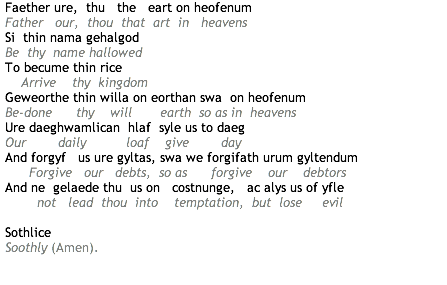ARMENIAN THEN AND NOW
It is often stated that Armenian language has
gone through “major” changes throughout its
existence. Although there are plenty of
indications to reveal several changes in its
grammatical paradigm and etymology, however,
there is no evidence of “major” changes that
would indicate anything other than the normal
evolutionary process of a mature language.
Surprisingly, considering the documented
historical journey of the speakers of the
Armenian language, from division of the
Armenian homeland and the people by different
empires, to dispersions, persecutions and
destruction of the monasteries that were also
centers of higher learning and custodians of
the cultural patrimony of Armenians, the
language not only maintained a remarkable
steadiness but was able to retain its
characteristics in spite of the odds as well as
evolve and further develop the fundamentals of
its grammatical structure and enrich the
etymological components of its vocabulary.
One of the yardsticks to measure the evolution
of a language is to catalogue the changes of
its etymology and grammar. The footing of the
time lapse to quantify the changes is a cycle
of 500 years while the computation of the
evolution of the components of a language
(grammar and etymology) is in terms of the
percentage of the changes within the cycle
where the ratio of up to 10% change is
considered to be the pace of a normal evolution
of a language.
Within this context a comparison of the
“evolutionary” process might shed some lights
on the development of Armenian and English:
English,
Then & Now

Armenian, then and now

We should not be quick to conclude that Armenian language is frozen in time or stagnant. The remarkable stability of its etymological base is only a proof of the maturity of a language.
Today, advances in science and technology are challenging linguists to keep pace with technology and the contest to create new words or redefine the existing words. A belated reaction by linguists often causes the proliferation of loan-words in languages world-wide and sometimes leading to serious debates in different parts of the world on language and culture. Even rich and mature languages are not indifferent. The debate on language in France is a good example.
Words like telephone, television or computer have become part of our daily lives. Not surprisingly, more than two-thirds of the existing languages have adopted a transliterated form of these words. Yet, the etymological structure of the Armenian language was able to coin new words in Armenian to designate the devices that allow us to chat with distant people, enjoy watching programs on small boxy devices and use a device that ordinates different programs called “software.”
At the turn of the 20th century, there was a significant number of literary works that were translated from English, Russian or French into Armenian. An imaginative Armenian translator ended up coining over 1000 words while translating the romantic novel.
Only time will tell if any of his words will survive the test of endurance.
Words are the leaves of the tree of language,
of which, if some fall way, a new succession
takes their place.
John
French